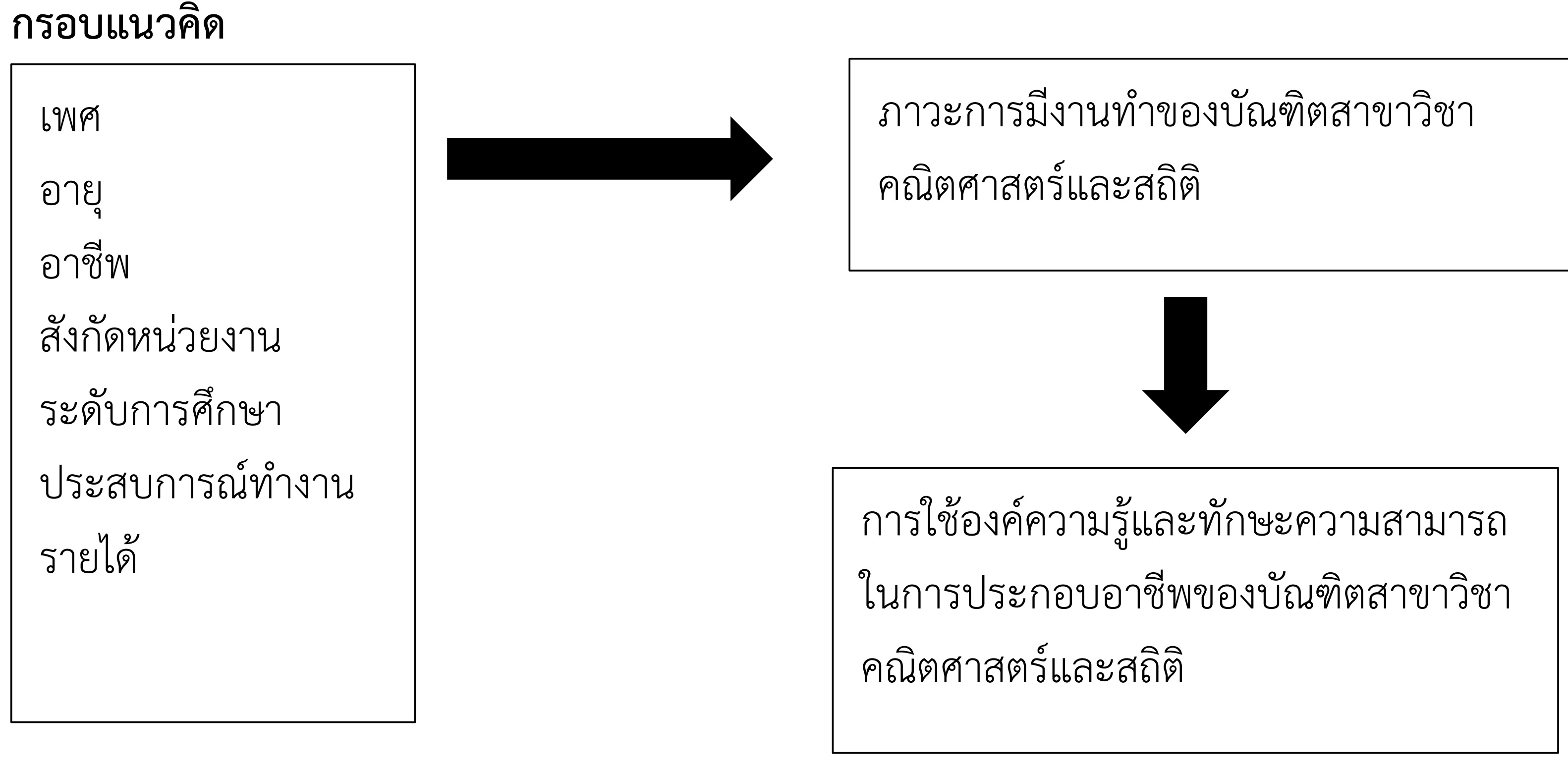Occupation of graduates in Mathematics and Statistics
Main Article Content
Abstract
The objectives of this research were 1) to study careers of the graduates from Department of Mathematics and Statistics 2) to study the use of knowledge and skills in careers of the graduates from Department of Mathematics and Statistics and 3) to analyze the relationship between occupational groups and courses with applied knowledge for careers of the graduates from Department of Mathematics and Statistics. The data was collected by using questionnaires from 127 graduates from Department of Mathematics and Statistics from all over Thailand and was statistically analyzed by using frequency, percentage, mean, and Chi-Square test. The results from the research showed that most of careers of the graduates from Department of Mathematics and Statistics are bankers (15.50 %), software engineers (13.40 %), teachers (11.00 %), mathematician and statistician (7.90 %), academics, programmers and unemployed (7.10 %), actuaries (5.50 %), researchers and academics (3.90 %), and data analysts and engineers (2.40 %). Form the graduates from Department of Mathematics and Statistics, knowledge was applied or upgraded in the high level (3.61). From the analysis of the relationship between occupational groups and courses with applied knowledge for careers of the graduates from Department of Mathematics and Statistics, the result found that set theory course, number theory course, computer programming course, computer programming and algorithm course, office automation management application course, and the analytical statistics had a statistically significant relationship with the occupational group at the significance level .05. And the courses that were not related to the application of knowledge in their careers included Euclidean geometry course, analytical geometry and trigonometry course, number system course, mathematics package program course, and mathematical statistics or statistical theory.
Article Details
References
กระทรวงการอุดมศึกษา วิทยาศาสตร์ วิจัยและนวัตกรรม.(2563).ความเป็นมา กระทรวงการอุดมศึกษา วิทยาศาสตร์ วิจัยและ
นวัตกรรม.
ชนิดา ทาระเนตร์. (2560).การพัฒนาผลสัมฤทธิ์ทางการเรียนคณิตศาสตร์เรื่องความน่าจะเป็นโดยการจัดการเรียนการสอน
เน้นกระบวนการกลุ่ม สำหรับนักเรียนชั้นมัธยมศึกษาปีที่ 5 โรงเรียนสา จังหวัดน่าน.สาขาคณิตศาสตร์ศึกษา คณะ
วิทยาศาสตร์ มหาวิทยาลัยบูรพา.
ฉวีวรรณ เศวตมาลย์. (2545). การพัฒนาหลักสูตรคณิตศาสตร์. กรุงเทพฯ: สุวีริยาสาส์น.
ทิชากร ทองระยับ.(2558).ผลการใช้แบบฝึกทักษะ เรื่อง ความน่าจะเป็นกลุ่มสาระการเรียนรู้คณิตศาสตร์ สำหรับนักเรื่องชั้น
มัธยมศึกษาปีที่ 3 ที่เรียนรู้ตามหลักทฤษฎีคอนสตรัคติวิสต์.มหาวิทยาลัยราชภัฎบุรีรัมย์.
บุญชม ศรีสะอาด. 2545. การวิจัยเบื้องต้น (พิมพ์ครั้งที่ 7). กรุงเทพฯ: สุวีริยาสาส์น.
มณฑา บัวศิริ.(2551).การนำความรู้ไปใช้ของผู้สำเร็จการศึกษาหลักสูตรระยะสั้นการศึกษานอกโรงเรียนจังหวัด
เพชรบุรี.มหาวิทยาลัยศรีนครินทรวิโรฒ.
สุภัตรา ทรัพย์อุปการ. (2562). คณิตศาสตร์ประยุกต์คืออะไร. จากhttps://www.scimath.org/article-
mathematics/item/9844-2019-02-22-01-35-46.


